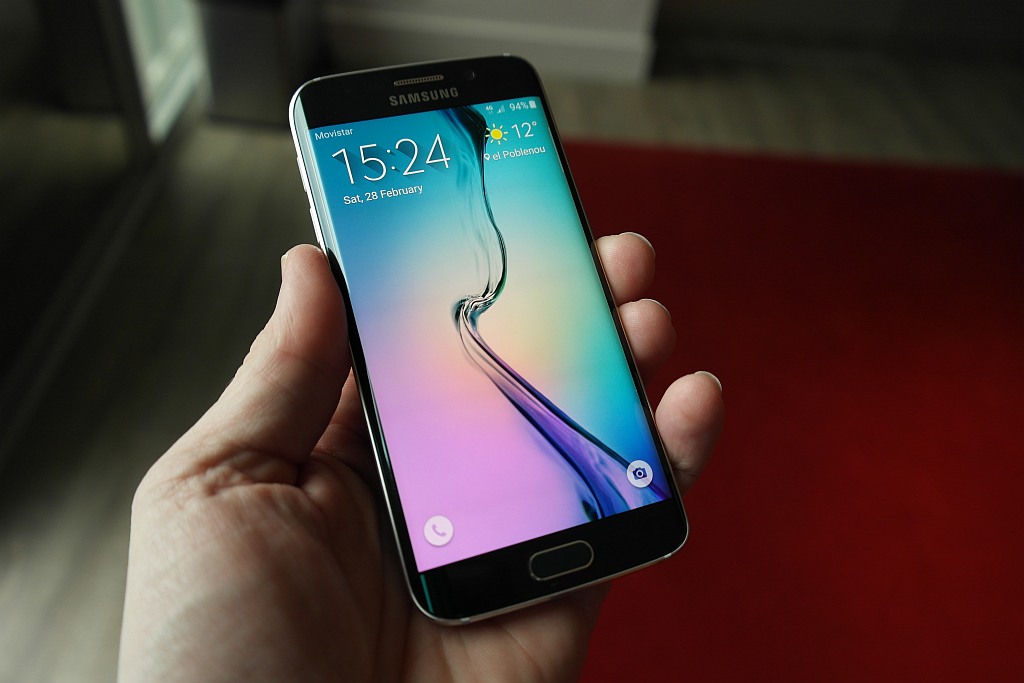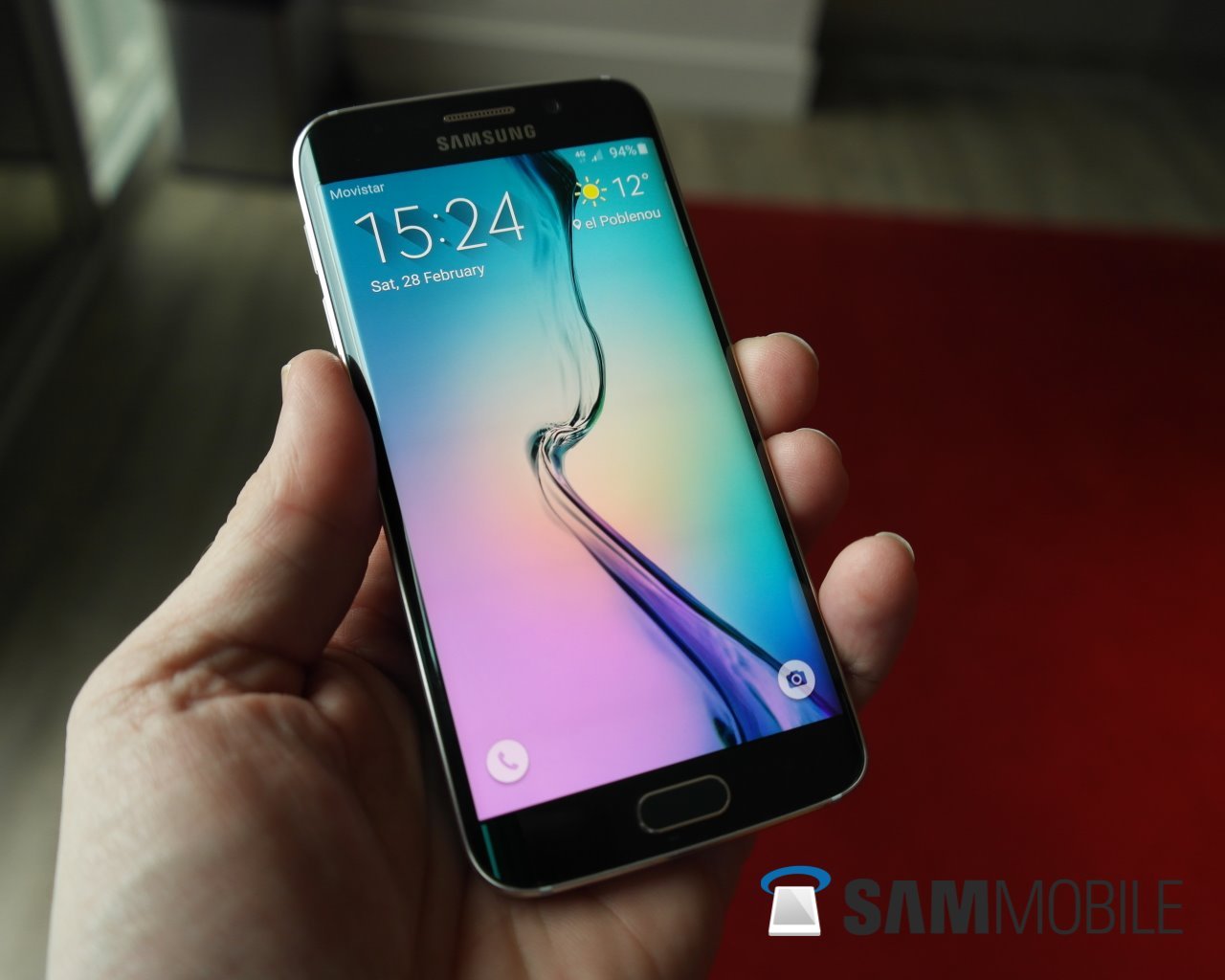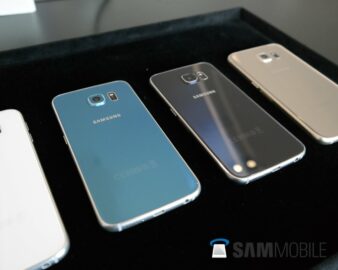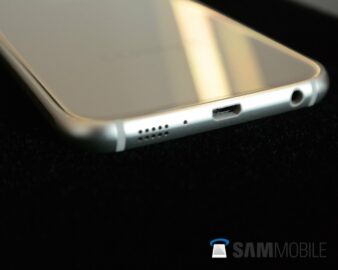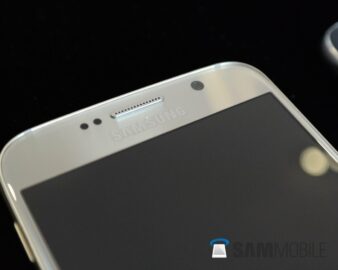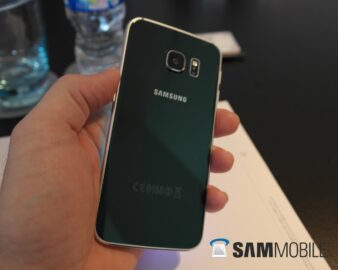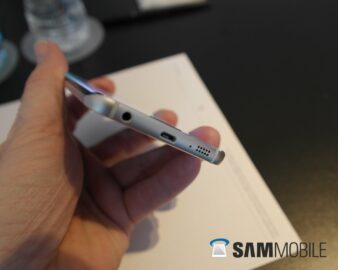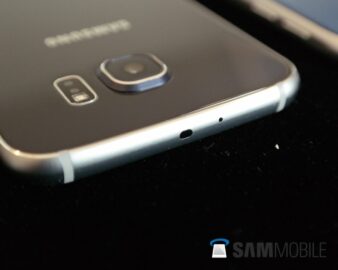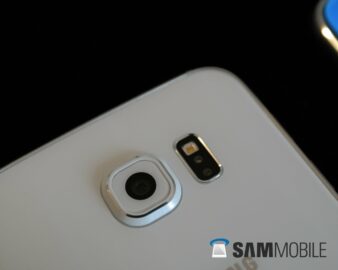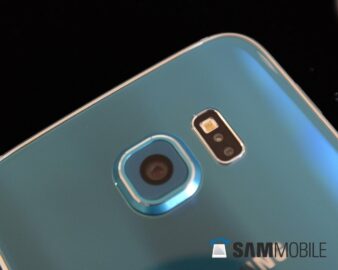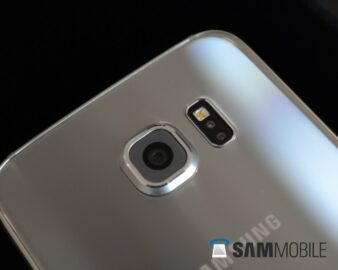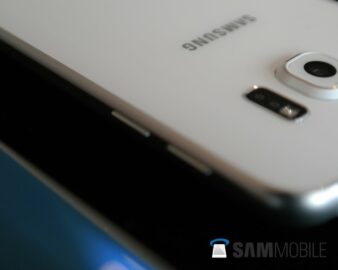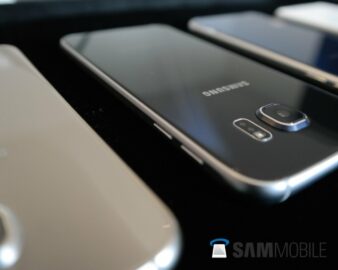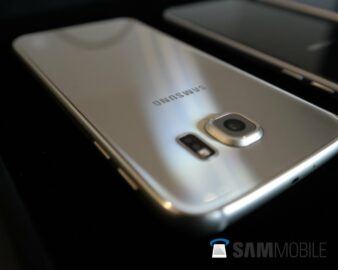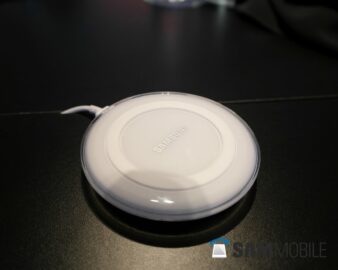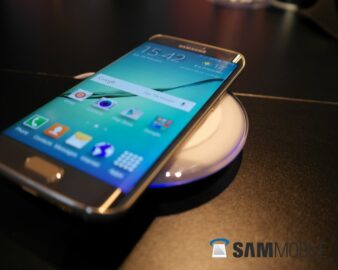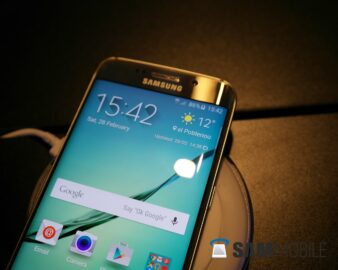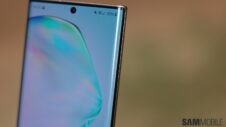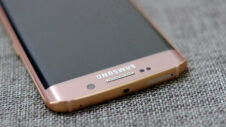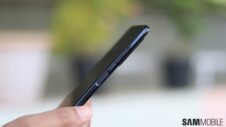At its UNPACKED 2015 Barcelona event, Samsung officially announced the Galaxy S6 and the Galaxy S6 Edge. The sixth-generation Galaxy S creates a new standard for design, craftsmanship and performance (Samsung’s words, but they are felt pretty true in our hands-on). Samsung gave SamMobile the opportunity to test their new devices just before the event, and you can read our hands-on experience below.
The first thing we noticed is that the Galaxy S6 and Galaxy S6 Edge seamlessly blend premium materials with the most advanced Samsung technology to offer consumers an unmatched mobile experience. The three key points in the Galaxy S6 lineup are a “purposeful design, an advanced camera and highly improved power management.” While the Galaxy S5 seemed like just an upgrade of the earlier Galaxy S4, the Galaxy S6 and S6 Edge truly seem like they were designed from scratch.
Design
Samsung seems to be listening to their customers again, mostly regarding the build materials we assume, as they are now releasing a device which seamlessly blends premium materials with top-of-the-line technology that ever Samsung flagship has offered in the past. The device is now fully made of metal and glass (Corning Gorilla Glass 4), and while it is now a true fingerprint magnet (like the S3 and S4 were in the past), the device does have a premium feeling that many of users seem to crave for.
Despite the whole device being made out of cold materials, Samsung has used non-industrial forms as much as possible to give the device a more warm and emotional feeling than other smartphone vendors do. This means that pretty much almost all corners are rounded and smooth, except for the rear camera lens that is sticking out a bit.
On the right of the rear camera is the heart-rate sensor, which has been moved from the bottom from previous Samsung phones. The devices feature a non-removable battery and do not have a microSD slot in them. The bottom of the devices features (from left to right) the 3.5mm headphone jack, the micro-USB 2.0 charging port and the microphone and speaker ports. The top of the devices have a secondary microphone and IR blaster. The left side of the devices has split volume buttons, which are very convenient to use when adjusting the volume. The right side of the devices has only the power button on it, so the device has been kept very clean in terms of physical keys and buttons. The SIM card slot of the S6 Edge is located on top, while the S6 has it located on the side.
The colors of the devices are made to reflect light, and they really look like a jewel when being held. There are various tones in the colors the devices are sold in, making the devices a joy for the eyes. However, as stated before, these devices are very easily attracting fingerprints since they are completely glossy, but that does make sense when you draw the comparison to jewels.
Both phones are very slim, and while the materials used tend to be quite heavy, Samsung managed to keep the weight of the two handsets less than the (plastic) Galaxy S5, which had the same screen size (5.1 inches).
Display
However, the 5.1-inch Quad HD (2560×1440) Super AMOLED screen here offers users the highest pixel density of 577 ppi and it looks really subliminal. You can’t make out individual pixels at all, and the only other device which has this insanely high pixel density is the Galaxy S5 LTE-A. The display is very bright, so much so that at maximum brightness it is very easily visible even under the harshest light, which we were able to verify indoors. Like all of Samsung’s Super AMOLED displays, this one has vivid colors and great viewing angles, and it’s overall an amazing display that will probably be the best among the flagship smartphones in the first half of 2015.
The S6 Edge’s display is the first two-sided Edge display that Samsung is releasing. It’s curved on both sides, which means that the whole front is the display from edge to edge. The S6 Edge is able to be dual-edged by only letting the edge go to the half of both sides, so the volume and power buttons are located more backwards on the side than usual. The look of the S6 Edge is better than the regular S6, but the latter wins when it comes to the feel in-hand.
User Interface / Software
The best improvement on the Galaxy S6 is by far what Samsung did to its software. The TouchWiz skin is built again from the ground up, and it is awesome. In the time that we were allowed to play with it, we did not experience any hiccup in the software at all. It is built on the latest iteration of Android Lollipop (5.0.2). The Recent Apps drawer opens up instantly, which is a huge difference from the Note 4’s current software (both on Android 4.x and 5.0 the recent apps menu takes time to show up). The Settings menu has been slimmed down considerably, making it easier to pick the right setting compared to before.
One other neat addition is the fact that TouchWiz now supports theming by default (and the customization is pretty extensive, with even Samsung’s apps changing their appearance based on the theme selected), to let the user change the look and feel of their devices right from the start. Third-party themes are apparently supported as well, though we will need to make sure once we get more hands-on time with the two devices.
Audio
The audio has been enhanced for a dynamic & adapt sound experience. The speaker on the bottom of the devices is 1.5 times louder than the Galaxy S5’s and is sounding crisp, even on maximum volume, without any distortion. It also ships with a pair of ergonomic earbuds as we reported earlier. Performance on headphones has always been a strong suit for Samsung devices, and we’re pretty sure the same will be the case on the Galaxy S6 and S6 Edge as well.
Camera
Both the rear and front camera are fitted with Dual Bright f1.9 lenses (for example, the Galaxy S5 had an f2.2 lens) which should provide superior images. The high-resolution sensors perform great, even in poor lighting conditions, thanks to the use of the infrared heart-rate sensor for the IR Detect White Balance feature to provide advanced light sensitivities (it automatically detects whether you are inside or outside). In addition, Auto Real-time High Dynamic Range (HDR) and Smart Optical Image Stabilization (OIS) are present as well, similar to the camera on the Galaxy Note 4.
A nice camera feature is the Quick Launch function, which allows users to open up the camera app in just 0.7 seconds by simply clicking the home key button twice (when the screen is off). This is done by always keeping the camera run on standby to circumvent the camera sensors’ regular start-up time. To speed up the camera usage even more, it also features the same fast tracking auto-focus that is found in the NX1, and it worked very well when we tested it.
Security
The enhanced touch/tip-based fingerprint sensor seems to perform much more accurately than the swipe-based fingerprint sensors used in the Galaxy S5 and Note 4 series (which isn’t surprising). The fingerprint sensor is used for quick authentication and saves encrypted data in a secure part of the device storage, and this seems to work very well. We think that this improvement will trigger more people to actually use the fingerprint sensor on a day-to-day basis.
Connectivity
We were really glad to see that Samsung is embedding wireless charging technology in its devices by default again. While it might not be as useful for all people, it is a great move as they have embraced both popular standards at the same time; the devices work with any wireless pad available in the market that supports WPC and PMA standards (Qi and PowerMat).
Samsung will also be releasing their own wireless charging pads which look stunning and are made from 0.3mm(!) thin coils for charging. They are available in the colors White Pearl and Blue Topaz and look very classy, even featuring an all-around LED light to show the charging process.
Wired charging through the microUSB 2.0 port is really fast too, as a 10-minute charge will give the user about 4 hours of regular usage or 2 hours of HD video playback.
Battery
As stated earlier, the battery is non-removable to make the devices more slim, and the Galaxy S6 and S6 Edge have battery capacities of 2,550 mAh and 2,600 mAh. Samsung’s Exynos 7420 octa-core processor should take care of battery performance thanks to its 14nm manufacturing process, which should allow for more power efficiency. To provide even more juice out of the batteries, the phones ship with both Power Saving Mode and Ultra Power Saving Mode, power saving features that Samsung has been using even on low-end phones like the Tizen-powered Z1.
Conclusion
The Galaxy S6 and Galaxy S6 Edge will be available globally starting from April 10, 2015 and we are pretty excited about the two devices (more so about the S6 Edge, which is absolutely stunning). Samsung has admitted that it listens to their customers (mostly regarding the build materials) and it’s easy to see that the company is learning from both its successes and missteps and has really stepped up its game with the redefined Galaxy S flagships. We personally think Samsung is poised for success with the Galaxy S6 and Galaxy S6 Edge, both of which are big upgrades over the Galaxy S5 and could define Samsung’s future in the smartphone industry.
